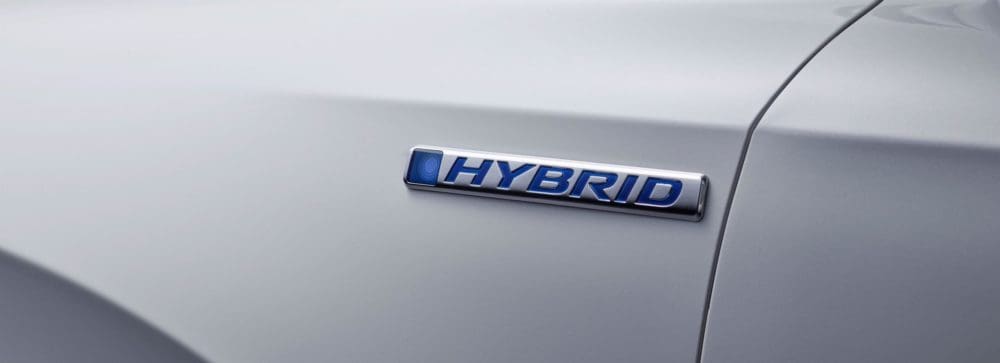
Quite some years ago, Emissions Analytics, the UK’s respected researchers on the subject of vehicle emissions, made some detailed studies on the practicalities of conversion of road transport to electric power. It concluded that, when EV battery supplies are limited (as they were, and still are), the cause of reducing CO2 emissions was better served by making larger numbers of hybrids than using up the limited resources in manufacturing smaller numbers of pure electric battery EVs. Simple self-charging hybrids, as they have some to be known, with their much smaller batteries of around 2-to-3kWh capacity, can take far larger numbers of older, high emissions cars off the road. The groundwork had already been done by Toyota, in establishing its Prius as the natural vehicle for minicab drivers, being both economical and environmentally clean. That hybrids are affordable was, it would seem, another obvious factor in what eventually transpired in the UK market, and is mirrored elsewhere in Europe, and in spite of their apparent complexity, they have turned out to be some of the most reliable cars on the road.
This analytical work by Emissions Analytics was all done well before COVID-19 which, together with shortages of semi-conductor chips, disrupted the whole car industry. Attempting to control the sales of various market sectors and fuels type with taxation breaks, purchase grants, and company car tax benefits for going electric was thrown into disarray, and only this year are sales showing more consistent patterns. Maybe the free-market economy has been responsible, but the battery EV market share has virtually stabilised, and data shows a steady 30% share of self-charging hybrids in the UK, and much the same in Europe, mild hybrids included. That’s around twice the market share of pure EVs, at 16%, whilst PHEV sales are stuck at just 6%. So the market seems to have made its own choices, with the growth of pure EV sales now worryingly slowing, maybe mostly as a result of the lack of on-road charging facilities. These collective trends seem to suggest that the annual EV sales needed to justify Britain’s 2030 targets are nowhere near achievable. Let’s clarify something though, as in Britain, 2030 new hybrid cars are defined as having “significant zero carbon capability” will still be legal, although in reality that means only a relatively small proportion of PHEVs on the market. It excludes any self-charging hybrids, as they have nowhere near the necessary battery capacity. So pure hybrids are effectively to be outlawed in the UK in 2030, and the position with PHEVs will only be known when “significant zero carbon capability” is defined in terms of battery range, most likely somewhere between 30 and 50 miles.
Meanwhile, the proposition of giving hybrids a significant part to play in the transition to all-electric power seems to have come about naturally, rather than being forced by any legislation, or other external controls. Their significant market share has undeniably eased the transition to electric power and offered new car purchasers affordable low-carbon motoring, without the challenge of on-road refuelling. But the proposal that hybrids should be effectively killed off in the UK in 2030 means the next seven years will be their swan song, although we can be sure they will be around on the roads for many years after 2030, and will be in the rest of Europe, too. But for Britain to stick to that 2030 deadline and ignore the benefits of making millions of efficient petrol (and diesel) hybrids for another five years, is foolish in the extreme. It’s foolish to isolate ourselves by pretending that we will be in a sensible position to kill self-charging hybrids by 2030, when we inevitably will not. The longer we deny this, the more chance we will be left severely disadvantaged in Europe and world markets, with obvious consequences for our car industry. Honda, Kia, and Toyota have shown that you can get CO2 emissions down to 100g/km, and below, and there’s probably more to come with fine tuning, and maybe slightly larger storage batteries. Figures of 80mpg and more in urban motoring speaks volumes, and we cannot afford to take such brilliantly clean performers like the 98g/km CO2 Toyota Corolla and 100g/km Kia Niro off the UK market, let alone the Yaris and Jazz. We have benefited from aligning ourselves with the EU since Brexit on most automotive regulatory and emissions matters, and now is not the time to change that position.
© Motorworld Media 2023
Registered Office: 4 Capricorn Centre, Cranes Farm Road, Basildon, Essex. SS14 3JJ
Company Number: 8818356
Website designed by Steve Dawson
One Response
The Eu made regulations to give precedence to the European manufactured diesel car and cleverly limited the sales of the Japanese petrol-hybrid makers, the Japanese sold their first hybrids in 1999/2000, opinions will vary but the simple fact is the cost of a traction battery was greater than the profit margin on a European car, the European car makers simply could not compete on price with the manufacturing efficiency of Toyota and Honda, a motive was to sideline the Japanese and ringfence the Eu car market with Eu manufactured diesel-engined cars as the dominating motor car, the USA dieselgate revelations of fraudulent methods by the Eu car makers was the undoing of the plot